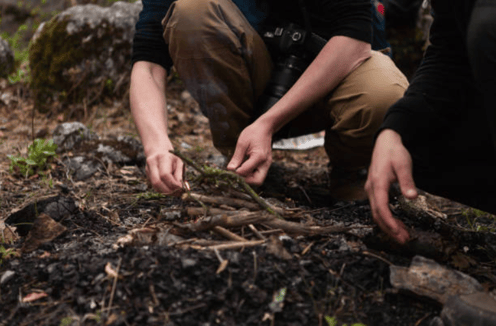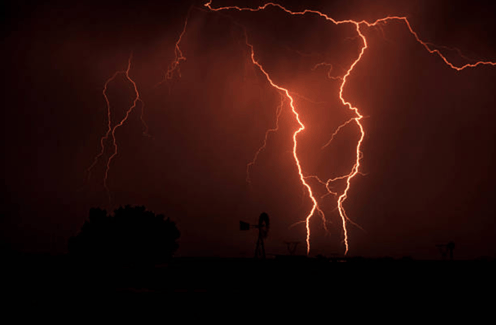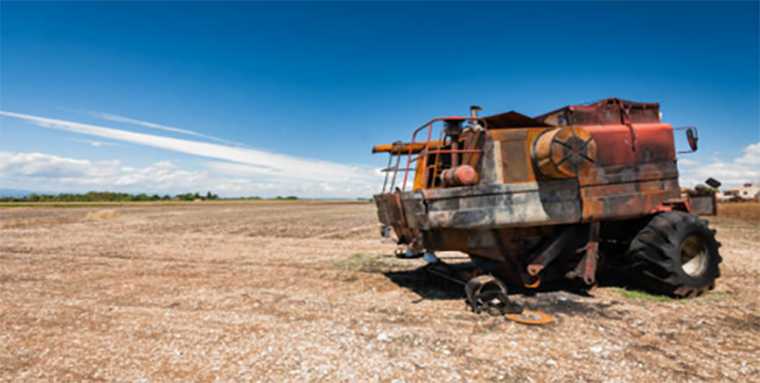Broad-acre farmers face an incredible risk of bush fires during drought spells especially when accompanied by heat waves – prompting the need for precautionary measures such as having a fire fighting unit on hand, incorporating firebreaks, going over safety checklists and preparing a detailed plan on what to do when a bushfire does happen.
While bush fires have some positive effects, too much of it - and too frequently - occuring over a wide expanse of land, could end up having negative effects, such as changing the soil’s characteristics among other things.
The frequency of bushfires in Australia, according to a study has increased by 40 percent per week over a five year period - specifically between 2008 and 2013. There were 4,595 bushfires per week in 2013 alone. Although according to the study more data is needed to blame the increase of bushfire frequency on climate change alone, there are other ways that bushfires can start on a property at any given moment. Below is a list of known causes of fires ranging from natural causes to human activities.
Causes of Fires On Farms
1. Humans and Population Density
As it turns out, majority of bushfires are due to humans. For instance, according to a study, 47 percent of bushfires were due to accidents such as caused by cigarettes and campfires, while others were caused by powerlines and other equipment, factors that are very much linked to increasing population density.
According to lead author Kathryn Collins, "The higher the population density the more ignitions you get.” A population increase, when paired with climate change, will likely cause more bushfires to happen in the future, says Ms Collins.
Unfortunately, 40 percent of bushfires in the same study wasn’t accidental but deliberate, while 13 percent was due to lightning.

2. Arsonists
Among other human activities that start fires, arson stands out. In Australia, arsonists cause damage worth an estimated $2 billion every year. Although most bushfires occur in regional areas, typically on the fringes of major urban development, urban expansion increases the risk of arson. Young people in high youth unemployment areas play a major part.
"You've got this group of youth who are feeling disenfranchised, who are unoccupied, who are probably feeling pretty cross about it … and there will be a number of those who feel angry enough to light a fire," says director of the National Centre for Research in Bushfire and Arson, Janet Stanley.
Psychological difficulties coupled with using fire to vent out emotions are what a lot of arsonists have in common.
3. Hay Spontaneous Combustion
Where there is drought, there is livestock that needs hay. Whereas hay easily catches fire from other sources, it's more than capable of catching fire all by itself.
Ironically, hay is more prone to spontaneous combustion when wet or moist than it does when it’s dry. Heat can build up in tightly packed and moist hay due to a bacteria that eats up the organic material and produces heat in the process. When the conditions are right for the heat to continue rising without a way for it to escape, and with just the right amount of airflow present, spontaneous combustion can take place.
There has been a number of cases of hay catching fire on highways mid-delivery to rural communities, hugely affecting livestock dependent on hay due to drought.
Fortunately, there are several signs to look out for when there is too much heat in the hay such as: steam rising from the haystacks, mould growth, unusual odors, and slumping sections, among other things.
4. Lightning
As mentioned earlier, lightning is one of the reasons that causes bushfires to happen. It can strike at any time and farms anywhere are especially vulnerable.

Such was the case in Uarbry, a small town near Cassilis in central west of New South Wales where lightning struck, causing huge losses and damage to farms and other property. The bushfire that followed damaged an estimated 41,650 hectares, and was still counting, a day after it first started.
Nearby areas at the time had been urged by Rural Fire Service to be vigilant in the implementation of their bush fire survival plan. Living in bushfire-prone areas make it necessary to prepare a plan, such as making sure there is an adequate supply of water for fire fighting equipment - just in case.
5. Equipment / Machinery
Crops in farms and other flammable vegetation can get easily ignited by farming machinery and other farming equipment that are faulty. These, in conjunction with poor safety practices, increase the risk of fires.
In rural south Australia alone, about 25 fires are caused by vehicle and engine exhausts. Parts that easily heat up such as a metal exhaust pipe, muffler and catalytic converter and shield could cause crops, and even dry grass nearby, to catch fire.
Sometimes all fire needs to take place is for the source of heat to get close enough. Direct contact to vegetation isn't always necessary.
Internal combustion engine-propelled machinery that lack a silencing device is another risk factor as well as any machinery that’s full of mechanical defects. Dust in engine bay may also ignite especially during harvest season when dust is accumulated around the engine. During this time, it's highly recommended as part of any farmer’s harvest checklist to have fire fighting equipment ready with 250 litres of water in the paddock.
All these factors put farmers in increased danger of poor yields caused by fires that could otherwise be avoided with regular equipment and machinery maintenance, updates, or upgrades.
Related article:
How Well Do You Know Your Fire Fighting Unit?
6. Powerlines
High-voltage powerlines can spark a dreaded bushfire. In fact, some of Australia’s worst fire disaster have been triggered by powerline failure or damage. Power companies had been deftly sidestepping vital findings on negligence on cases filed against them.
The risk for powerlines starting bushfires is high enough to prompt a technological endeavor in Victoria in an attempt to stop powerlines igniting and risk a repeat of some of the deadliest bushfires like Black Saturday.
Such fires can get started by a tree falling on a powerline, quickly igniting flames, or by a cable hitting the ground.
Each one of these 6 real life causes of fires that start on farms can easily occur in combination with any of the others.
This is why awareness of how fires can take place in farms is necessary in jump-starting an ignited sense of determination in order to promote safety and protect the hard work you've invested. Indeed, farmers share a common noble responsibility to help protect lives and property while minimizing personal losses.
With all these in mind, note that fires can be mitigated or largely avoided with the appropriate firefighting unit.
Types of Fire Fighting Units for Farms
The extent of damage caused by a single bushfire is as unpredictable as what could cause it. Don’t leave yourself vulnerable!
Contact us for your fire fighting equipment needs.









What do you think about this post?
Comments